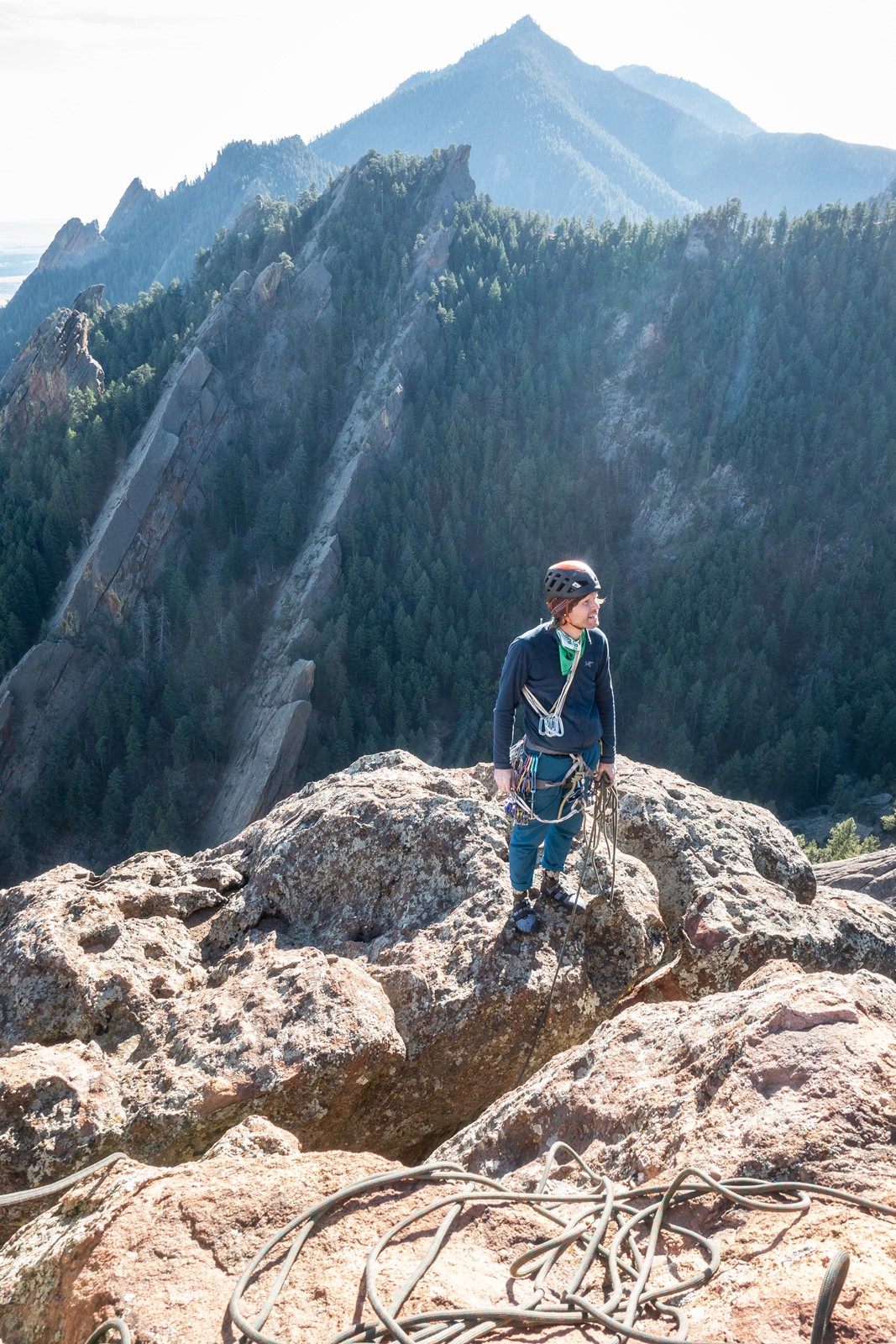
Since the origins of rock climbing, Boulder and the Front Range have repeatedly been at the forefront of American, if not global, standards of difficulty. Most recently, on Dec. 3, a new boulder problem rated V17 — currently the top of the scale — was climbed in the South Platte by Nathaniel Coleman, of Salt Lake City.
Fewer than 10 boulders in the world are given V17.
As inspiring as the latest and greatest can be, I glean tremendous joy and motivation imagining climbers of the past, and their visionary leaps forward that have made climbing what it is today.
Here are five historic examples of local free climbs — where a rope and gear were employed to protect a fall but not for upward progress — that, when established, equaled or surpassed the most difficult routes anywhere.
They are a testament to local talent and the creativity of our predecessors.
Hornsby’s Ledges (5.9), Flatirons, 1948
This route tackles the imposing north overhang of the Second Flatiron. Dave Hornsby and Harold Walton scratched their way up this short, difficult route before the 5.9 grade existed anywhere in America.
According to Walton, “This was hard work, muscling up on those overhangs. More than once, one or the other of us fell and swung out. Ultimately, we made it free.”
Later in 1948, Walton played a key role in forming the Rocky Mountain Rescue Group.
Northcutt Start (5.10d), Eldorado Canyon 1959
Two decades before bouldering was considered anything but practice for real climbing,
Ray Northcutt was among the best. One day in Eldo Northcutt’s partner, Ron Foreman, showed him a 70-foot vertical crack and smooth face saying, “Layton Kor free climbed that the other day.”
Being friendly competitors, Northcutt thought, “If Kor can do it, so can I.” Northcutt cruised up the crack, then hammered a piton before the crux traverse.
With aplomb, he committed to the moves, apparently matching Kor’s effort. Immediately after the ascent, Foreman admitted that he’d made up the story about Kor, who had never actually freed the route!
And that’s how Northcutt was tricked into freeing the country’s hardest route.
Athlete’s Feat (5.11a), Boulder Canyon, 1964
The peripatetic Royal Robbins, of Yosemite fame, surmounted the smooth, down-sloping shelf of polished granite with only fingertip holds as if he were levitating.
His first-try free ascent of the extremely thin first pitch, with local icon Pat Ament, was groundbreaking, not only for its difficulty but for its boldness. His only protection was a small piton below his feet (today there are two bolts).
A fall would have landed him on a large, pointed flake of granite just above the ground, 30 feet below.
Supremacy Crack (5.11c), Eldorado Canyon, 1966
This 40-foot, overhanging crack was one of the first 5.11s in America.
On its first ascent, Pat Ament rested briefly on a piton after the crux, then continued to the top.
Before free climbing had a strict definition (which includes “no resting on gear”), this counted as a free ascent.Ament said, “I had no idea such a little climb would amount to anything in the eyes of other climbers.”
In the latest edition of Climb!, historian Jeff Achey wrote, “Whether or not Ament’s feat is judged today as a free lead does not change its importance. Such relentlessly overhanging climbing was unprecedented, and the lead of Supremacy Crack opened the door on a new realm.”
Genesis (5.12d), Eldorado Canyon, 1979
A flawless, blank-looking shield of red sandstone lurks conspicuously above the trail to Redgarden Wall. Genesis demands 120 feet of sustained climbing with two 5.12d cruxes, and the possibility of a 30-foot fall from the last hard moves.
Jim Collins, a Boulder native, had worked his way through the area’s hardest climbs. By the time he started college at Stanford he was totally consumed by free climbing Genesis. While at Stanford, he utilized the rocky campus buildings as a training ground. He even carried a needle in his pocket to drain the blisters on his fingertips. This way he could continue climbing without getting off the wall.
Collins eventually climbed Genesis after multiple seasons of effort and nearly 100 attempts. For several months, Genesis reigned as the hardest free climb in the world.
Contact Chris Weidner at cweidner8@gmail.com. Follow him on Instagram @christopherweidner and X @cweidner8


 PREVIOUS ARTICLE
PREVIOUS ARTICLE
